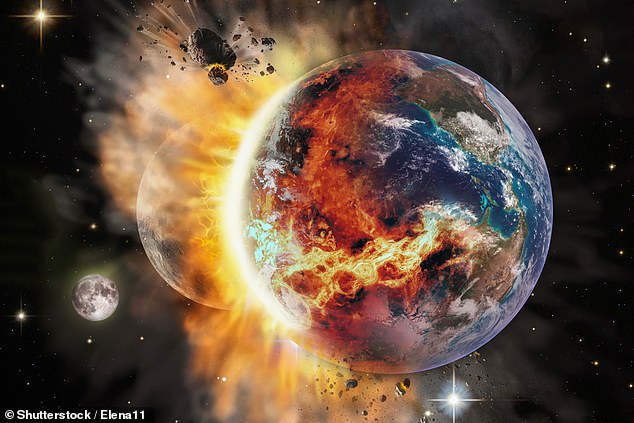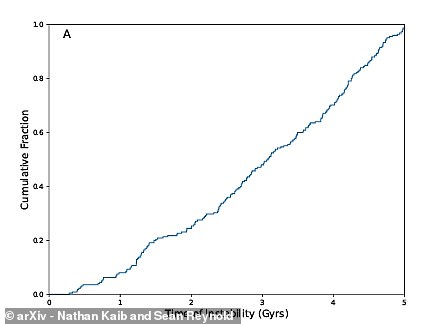- READ MORE: Revealed in a declassified CIA book, "Bombshell" discloses the way the world may come to an end.
From Armageddon to The Day After Tomorrow, numerous Hollywood films have depicted potential apocalyptic scenarios for our planet.
However, if a worldwide doomsday scenario were to occur, what could potentially cause the extinction of all life on our planet?
Researchers think they might have found the solution at last, which implies that our end could be quite ghastly.
A recent study conducted by scientists from the Planetary Science Institute and the University of Bordeaux suggests that our planet might be ejected from its orbit due to the gravitational influence of a nearby stellar passerby.
And without our Sun providing warmth, any residents — including humans — would be left to freeze to death.
Fortunately, the odds of this occurring are extremely slim.
In the coming five billion years, the likelihood of Earth being ejected from its orbit due to a nearby stellar encounter is approximately one in 500, as stated by the research team.
The research team stated in their paper that they found a 0.3% likelihood of Mars being destroyed due to a collision or expulsion, and a 0.2% probability that Earth might experience a similar fate through impact or ejection.


For many years, scientists have wondered What are possible ways the Earth might meet its demise? .
A drifting black hole, massive asteroid collision, and nuclear warfare might lead to devastating calamities. Additionally, the emergence of autonomous killing machines or the inversion of Earth’s magnetic field could also cause such catastrophes.
In their latest research, featured in arXiv Nathan Kaib and Sean Reynolds embarked on a mission to determine if wandering stars might be responsible.
"The detailed long-term dynamic fate of the Sun's planetary system has been simulated and subjected to statistical analysis," they elaborated.
However, much of the previous research views the solar system as entirely self-contained, ignoring the possible impact of close encounters with stars from outside our system.
To address this query, they executed tens of thousands of simulations depicting our solar system interacting with nearby stars over the coming five-billion-year period.
Alarming findings from their simulations indicate that our solar system’s eight planets along with the dwarf planet Pluto are “considerably more unstable than previously believed.”
Pluto has the highest likelihood of disappearing due to either a collision or an ejection, according to simulations which show a 5 percent probability for this occurrence.
Mars fairing somewhat better with a 0.3 percent probability, whereas Earth has a 0.2 percent likelihood of getting ejected from the solar system.
Regarding the passing stars to watch out for, researchers anticipate that the most hazardous ones will be those coming within 100 astronomical units of the Sun—distances comparable to how far Earth is from the Sun multiplied by one hundred.
Based on the simulations, there’s roughly a five percent probability of such a near miss occurring within the next five billion years.
To summarize, wandering stars could impact the stability of both planets and Pluto along with changing the long-term structure of the gas giants within the coming 5 billion years, according to the authors.
'Their significance on the solar system’s dynamical future largely depends on the strength of the most powerful stellar passage over this time span, which is uncertain by orders of magnitude.
'This uncertainty in the Sun’s future powerful stellar encounters means that the spectrum of future secular evolution and planetary instabilities is broader than that implied by isolated models of solar system evolution.'
Read more
Komentar
Posting Komentar